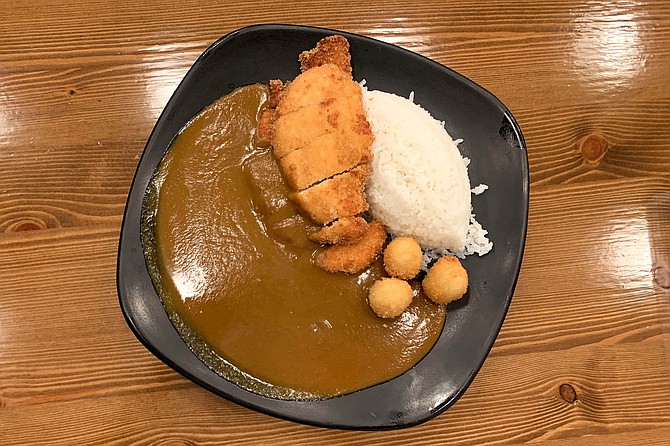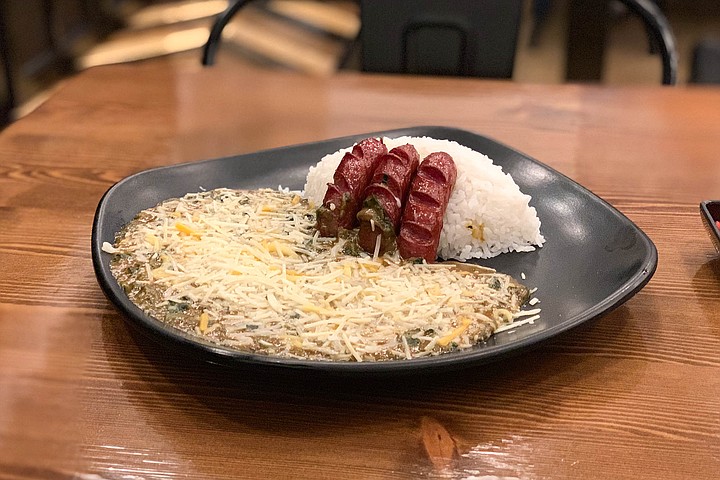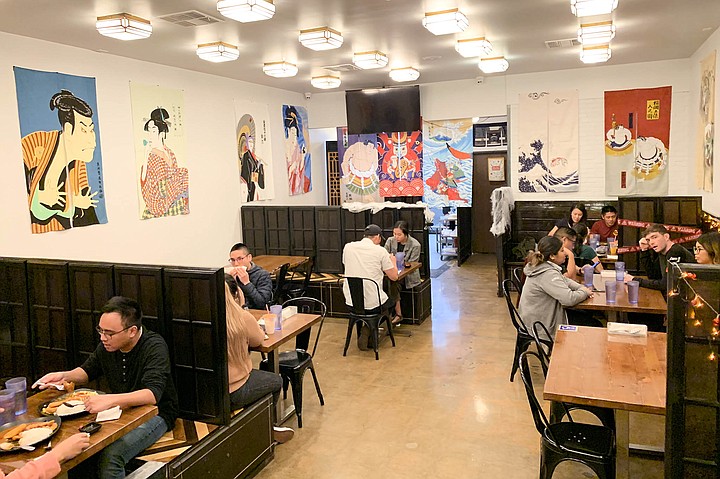 Facebook
Facebook
 X
X
 Instagram
Instagram
 TikTok
TikTok
 Youtube
Youtube

A lot of different cultural cuisines offer curry. Countries on the Indian subcontinent alone are responsible for dozens of different types of curry. Southeast Asia developed a whole other curry lineage, led by Thailand, with several of its own. Yet, thanks to the lifestyle of an American military brat, Japanese curry was my first.
Which is a little backward. Japanese curry was late to the game, given that most of the signature dishes in the archipelago’s cuisine are a product of sakoku, Japan’s two centuries of self-imposed isolation. From the 17th to 19th centuries, Japan effectively shut itself off to the outside world, which meant missing out on the global spice trade at its peak. That’s why, while other cultures were busy finding a place for chili peppers and a world of spices in their culinary traditions, Japan’s own traditions developed with a far more limited palette, forcing its chefs to get creative with the likes of rice vinegar, dashi, and miso paste.

What a time it must have been in Japan, when the embargo on outside trade lifted, and a flood of new and forgotten flavors entered the realm. New Kearny Mesa restaurant Zen Curry offers a wonderful opportunity to experience the style of curry that resulted. The curry-dedicated offshoot of a Las Vegas restaurant starts with caramelized onions, carrots, celery, and garlic, concocting its own blend of 16 spices, including cardamom, clove, cumin, allspice, ginger, and laurel leaves.
The restaurant promotes the blend as offering a litany of health benefits, including improved liver function, digestive health, and circulation. Personally, I enjoy it because it’s tangy, earthy, and rich.

But it’s how Zen Curry serves its house curry that’s the story here. You can get it straight up served with rice for $7. Or, you may choose among roughly 30 different toppings to add to it.
Most options start with a protein; panko breaded and fried tonkatsu pork cutlets are perhaps the most traditional. As with most Japanese restaurants serving katsu, there’s a chicken katsu alternative, in addition to a separate karaage fried chicken. But unlike most places, the katsu options don’t stop there: you’ll find shrimp, tofu, oyster, and even spam katsu cutlets.
You can order any of these with curry and rice for $10-12. Likewise, you may go for stewed beef, kurobata sausage, or gyoza dumplings. Whichever you choose, the add on toppings are where things get distinctive. I’m talkin’ garlic chips, almond flakes, steamed okra, or shrimp croquette. Ranging from fifty cents to four dollars (for a second protein), the assorted toppings in combination mean you can tweak your order every single time you visit, pretty much forever.
I kept my first try simple enough, going for chicken katsu and adding fried quail eggs. With a pool of thick, brown curry sauce adding flavor to everything, the meal took me back to my expat youth, delighting with both execution and nostalgia, and surprisingly filling for 11 dollars.
My second effort went a different direction. I was dubious of several cheese toppings featured on the menu, including parmesan, mozzarella, and a five-cheese blend. But I was game to try one, and even excited to match it with the spinach curry — same as the basic curry but with spinach stewed in. The grilled kurobata sausage I added turned out to be my favorite part.
The spinach flavor didn’t mesh well with that curry, which leaves little room for anything that isn’t primarily salty. And let’s just say, even in a post-sakoku world, I prefer Japanese food without the cheese. Zen Curry is off to a good start, but not all curry toppings work, so choose wisely.


A lot of different cultural cuisines offer curry. Countries on the Indian subcontinent alone are responsible for dozens of different types of curry. Southeast Asia developed a whole other curry lineage, led by Thailand, with several of its own. Yet, thanks to the lifestyle of an American military brat, Japanese curry was my first.
Which is a little backward. Japanese curry was late to the game, given that most of the signature dishes in the archipelago’s cuisine are a product of sakoku, Japan’s two centuries of self-imposed isolation. From the 17th to 19th centuries, Japan effectively shut itself off to the outside world, which meant missing out on the global spice trade at its peak. That’s why, while other cultures were busy finding a place for chili peppers and a world of spices in their culinary traditions, Japan’s own traditions developed with a far more limited palette, forcing its chefs to get creative with the likes of rice vinegar, dashi, and miso paste.

What a time it must have been in Japan, when the embargo on outside trade lifted, and a flood of new and forgotten flavors entered the realm. New Kearny Mesa restaurant Zen Curry offers a wonderful opportunity to experience the style of curry that resulted. The curry-dedicated offshoot of a Las Vegas restaurant starts with caramelized onions, carrots, celery, and garlic, concocting its own blend of 16 spices, including cardamom, clove, cumin, allspice, ginger, and laurel leaves.
The restaurant promotes the blend as offering a litany of health benefits, including improved liver function, digestive health, and circulation. Personally, I enjoy it because it’s tangy, earthy, and rich.

But it’s how Zen Curry serves its house curry that’s the story here. You can get it straight up served with rice for $7. Or, you may choose among roughly 30 different toppings to add to it.
Most options start with a protein; panko breaded and fried tonkatsu pork cutlets are perhaps the most traditional. As with most Japanese restaurants serving katsu, there’s a chicken katsu alternative, in addition to a separate karaage fried chicken. But unlike most places, the katsu options don’t stop there: you’ll find shrimp, tofu, oyster, and even spam katsu cutlets.
You can order any of these with curry and rice for $10-12. Likewise, you may go for stewed beef, kurobata sausage, or gyoza dumplings. Whichever you choose, the add on toppings are where things get distinctive. I’m talkin’ garlic chips, almond flakes, steamed okra, or shrimp croquette. Ranging from fifty cents to four dollars (for a second protein), the assorted toppings in combination mean you can tweak your order every single time you visit, pretty much forever.
I kept my first try simple enough, going for chicken katsu and adding fried quail eggs. With a pool of thick, brown curry sauce adding flavor to everything, the meal took me back to my expat youth, delighting with both execution and nostalgia, and surprisingly filling for 11 dollars.
My second effort went a different direction. I was dubious of several cheese toppings featured on the menu, including parmesan, mozzarella, and a five-cheese blend. But I was game to try one, and even excited to match it with the spinach curry — same as the basic curry but with spinach stewed in. The grilled kurobata sausage I added turned out to be my favorite part.
The spinach flavor didn’t mesh well with that curry, which leaves little room for anything that isn’t primarily salty. And let’s just say, even in a post-sakoku world, I prefer Japanese food without the cheese. Zen Curry is off to a good start, but not all curry toppings work, so choose wisely.
Comments